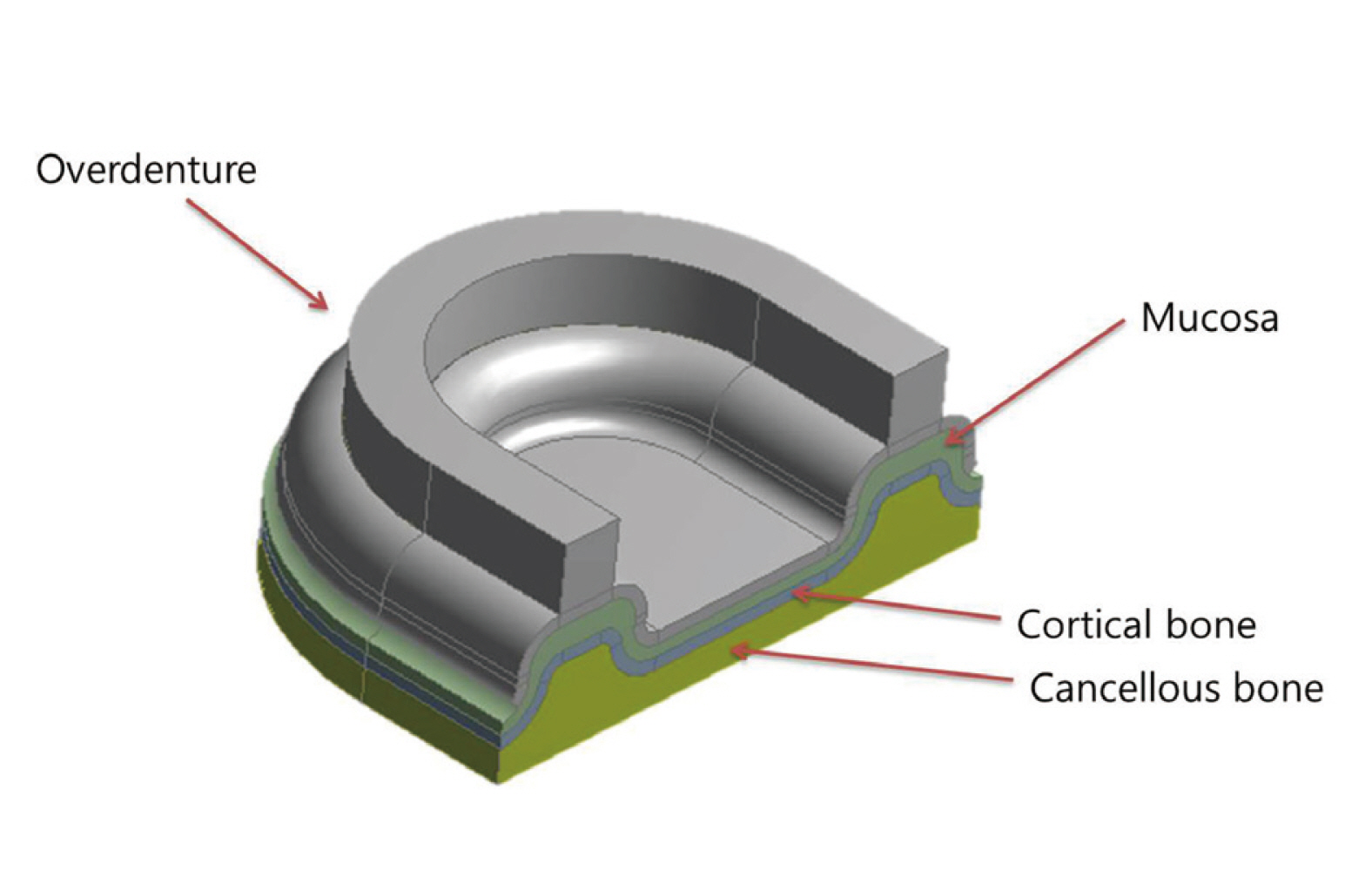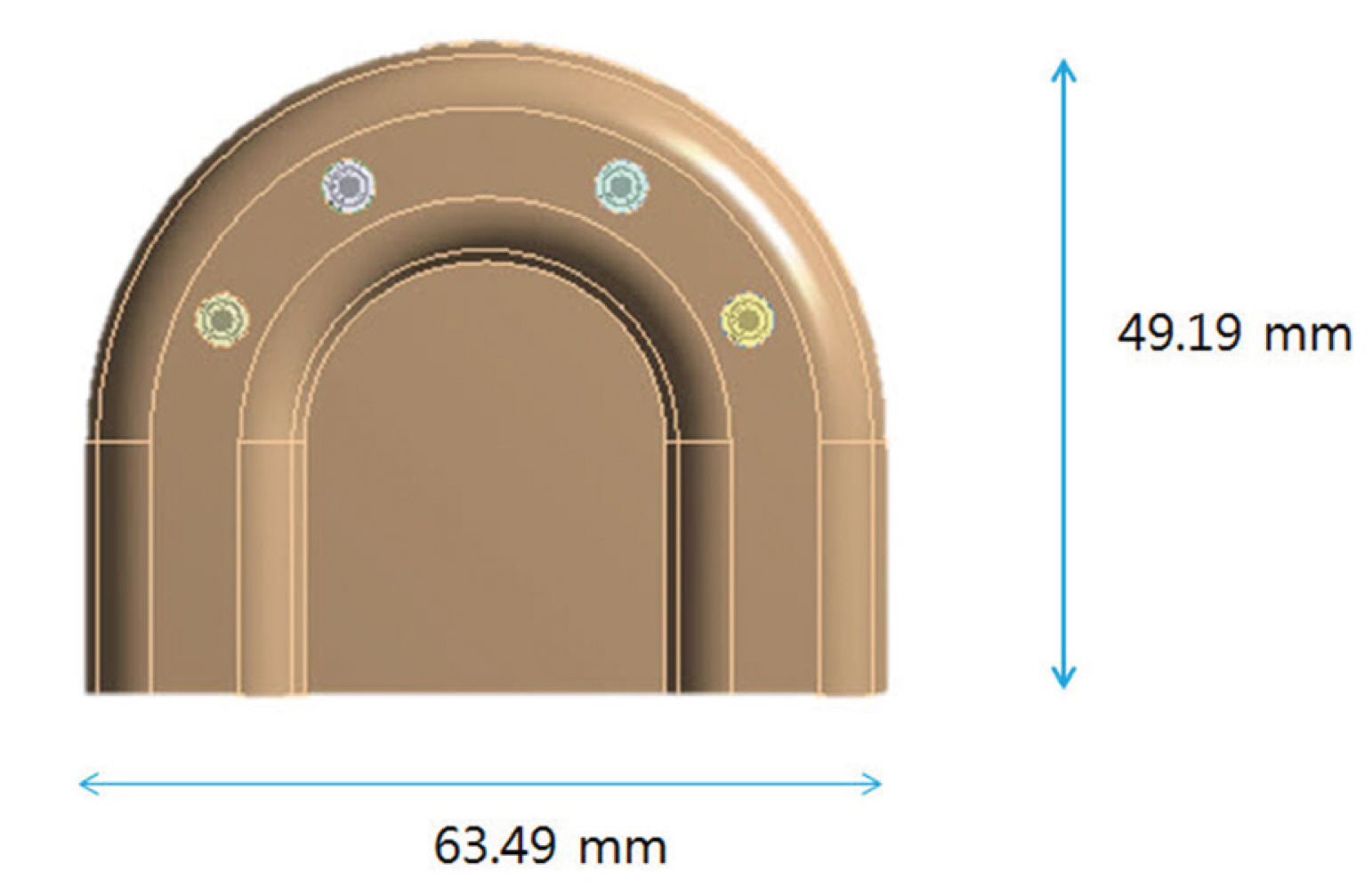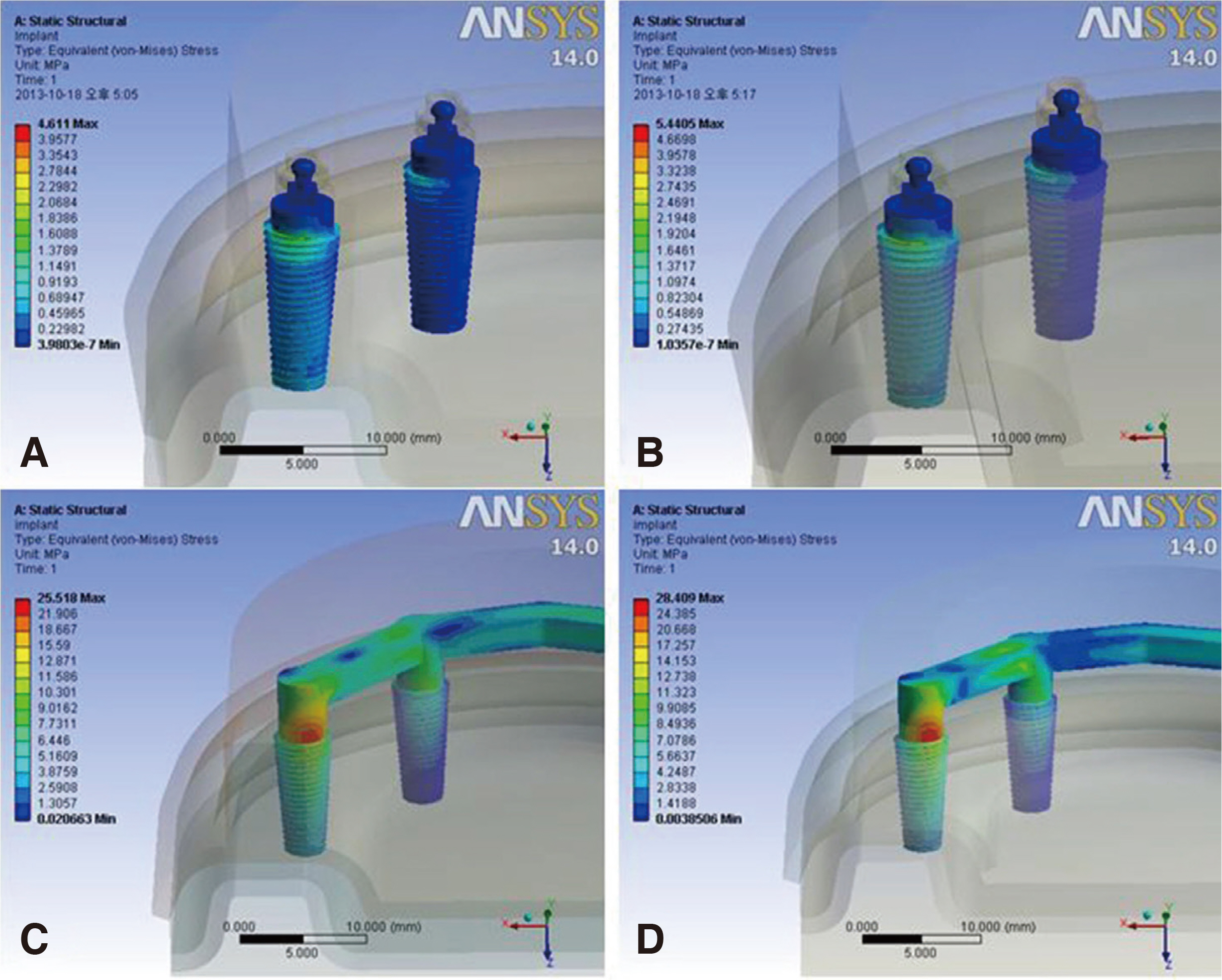J Dent Rehabil Appl Sci.
2020 Jun;36(2):80-87. 10.14368/jdras.2020.36.2.80.
Analysis on mandibular movement using the JT-3D system
- Affiliations
-
- 1Department of Prosthodontics, College of Dentistry, Chosun University, Gwangju, Republic of Korea
- KMID: 2503803
- DOI: http://doi.org/10.14368/jdras.2020.36.2.80
Abstract
- Purpose
This study aims to measure the mandibular movement using JT-3D system and provide a range of mandibular movement that can serve as a good reference for diagnosing the temporomandibular disorder.
Materials and Methods
This study was conducted in 60 young male and female adults. The maximum opening and closing movement was recorded using JT-3D system, and by regarding 5 times of repetitive movement as 1 cycle of movement, total 3 cycles of movement were recorded. During the maximum opening, vertical position of lower jaw, antero-posterior position, lateral deflection position, and maximum opening distance were recorded. To evaluate the reproducibility of JT-3D system, statistical analysis were conducted (α = 0.05).
Results
During the maximum opening, the average value appeared at 31.56 mm vertically and 24.42 mm rearwardly, lateral deflection position 0.72 mm, and maximum opening distance 40.32 mm. There was no statistical significance in all measured values for three cycles of movement recorded with JT-3D system (P > 0.05).
Conclusion
During the maximum opening, the average value appeared at 0.72 mm in lateral deflection position and the maximum opening distance at 40.32 mm, and the analysis on the maximum opening of lower jaw using JT-3D system showed sufficiently reproducible results.
Figure
Reference
-
References
1. 2017; The Glossary of Prosthodontic Terms: Ninth Edition. J Prosthet Dent. 117:e1–e105. DOI: 10.1016/j.prosdent.2016.12.001. PMID: 28418832.2. Santos IC, Tavares JMR, Mendes J, Paulo MP. 2008; A prototype system for acquisition and analysis of 3D mandibular movement. Int J Mech Mater Des. 4:173–80. DOI: 10.1007/s10999-008-9066-2.3. Baragar FA, Osborn JW. 1984; A model relating patterns of human jaw movement to biomechanical constraints. J Biomech. 17:757–67. DOI: 10.1016/0021-9290(84)90106-4.4. Osborn JW. 1989; The temporomandibular ligament and the articular eminence as constraints during jaw opening. J Oral Rehabil. 16:323–33. DOI: 10.1111/j.1365-2842.1989.tb01348.x. PMID: 2795311.5. Osborn JW. 1993; A model to describe how ligaments may control symmetrical jaw opening movements in man. J Oral Rehabil. 20:585–604. DOI: 10.1111/j.1365-2842.1993.tb01646.x. PMID: 10412481.6. Lucia VO. 1960; Centric relation-theory and practice. J Prosthet Dent. 10:849–56. DOI: 10.1016/0022-3913(60)90118-9.7. Preston JD. 1979; A reassessment of the mandibular transverse horizontal axis theory. J Prosthet Dent. 41:605–13. DOI: 10.1016/0022-3913(79)90054-4.8. Ahn SJ, Tsou L, Sánchez CA, Fels S, Kwon HB. 2015; Analyzing center of rotation during opening and closing movements of the mandible using computer simulations. J Biomech. 48:666–71. DOI: 10.1016/j.jbiomech.2014.12.041. PMID: 25597813.9. Radke JC, Kamyszek GJ, Kull RS, Velasco GR. 2019; TMJ symptoms reduce chewing amplitude and velocity, and increase variability. Cranio. 37:12–9. DOI: 10.1080/08869634.2017.1365421. PMID: 28868987.10. Ow RK, Carlsson GE, Karlsson S. 1998; Relationship of masticatory mandibular movements to masticatory performance of dentate adults: a method study. J Oral Rehabil. 25:821–9. DOI: 10.1046/j.1365-2842.1998.00325.x. PMID: 9846902.11. Hansdottir R, Bakke M. 2004; Joint tenderness, jaw opening, chewing velocity, and bite force in patients with temporomandibular joint pain and matched healthy control subjects. J Orofac Pain. 18:108–13. PMID: 15250430.12. Lepley C, Throckmorton G, Parker S, Buschang PH. 2010; Masticatory performance and chewing cycle kinematics-are they related? Angle Orthod. 80:295–301. DOI: 10.2319/061109-333.1. PMID: 19905854.13. Pinheiro AP, Pereira AA, Andrade AO, Bellomo D. 2011; Measurement of jaw motion: the proposal of a simple and accurate method. J Med Eng Technol. 35:125–33. DOI: 10.3109/03091902.2010.542270. PMID: 21381873.14. Yoon HJ, Zhao KD, Rebellato J, An KN, Keller EE. 2006; Kinematic study of the mandible using an electromagnetic tracking device and custom dental appliance: Introducing a new technique. J Biomech. 39:2325–30. DOI: 10.1016/j.jbiomech.2005.07.001. PMID: 16125713.15. Flavel SC, Nordstrom MA, Miles TS. 2002; A simple and inexpensive system for monitoring jaw movements in ambulatory humans. J Biomech. 35:573–7. DOI: 10.1016/S0021-9290(01)00233-0. PMID: 11955496.16. Zafar H, Eriksson PO, Nordh E, Häggman-Henrikson B. 2000; Wireless optoelectronic recordings of mandibular and associated head-neck movements in man: a methodological study. J Oral Rehabil. 27:227–38. DOI: 10.1046/j.1365-2842.2000.00505.x. PMID: 10784335.17. Dijkstra PU, De Bont LG, Stegenga B, Boering G. 1995; Temporomandibular joint mobility assessment: a comparison between four methods. J Oral Rehabil. 22:439–44. DOI: 10.1111/j.1365-2842.1995.tb00798.x. PMID: 7636614.18. Kiliaridis S, Karlsson S, Kjellberg H. 1991; Characteristics of masticatory mandibular movements and velocity in growing individuals and young adults. J Dent Res. 70:1367–70. DOI: 10.1177/00220345910700101001. PMID: 1939831.19. Karlsson S, Persson M, Carlsson GE. 1991; Mandibular movement and velocity in relation to state of dentition and age. J Oral Rehabil. 18:1–8. DOI: 10.1111/j.1365-2842.1991.tb00024.x. PMID: 2051244.20. Yatabe M, Zwijnenburg A, Megens CC, Naeije M. 1997; Movements of the mandibular condyle kinematic center during jaw opening and closing. J Dent Res. 76:714–9. DOI: 10.1177/00220345970760021301. PMID: 9062566.21. Furtado DA, Pereira AA, de Oliveira Andrade A, Bellomo DP, da Silva MR. 2013; A specialized motion capture system for real-time analysis of mandibular movements using infrared cameras. Biomed Eng Online. 12:17. DOI: 10.1186/1475-925X-12-17. PMID: 23433470. PMCID: PMC3636046.22. Agrawal J, Shenai PK, Chatra L, Kumar PY. 2015; Evaluation of normal range of mouth opening using three finger index: South India perspective study. Indian J Dent Res. 26:361–5. DOI: 10.4103/0970-9290.167638. PMID: 26481881.23. Santos IC, Tavares JMR, Mendes JG, Paulo MP. 2009; Acquisition and analysis of 3D mandibular movement using a device based on electromagnetic sensors and a neural network. J Med Eng Technol. 33:437–41. DOI: 10.1080/09593980902886354. PMID: 19401907.24. Lin Z, Zecca M, Sessa S, Ishii H, Takanishi A. 2010; Development of an ultra-miniaturized inertial measurement unit for jaw movement analysis during free chewing. J Comput Sci. 6:896–903. DOI: 10.3844/jcssp.2010.896.903.25. Kuwahara T, Miyauchi S, Maruyama T. 1992; Clinical classification of the patterns of mandibular movements during mastication in subjects with TMJ disorders. Int J Prosthodont. 5:122–9.26. Dawson PE. 2006. Functional Occlusion-E-Book: From TMJ to Smile Design. Elsevier Health Sciences;New York: p. 270–3.27. Agerberg G. 1974; Maximal mandibular movements in young men and women. Swed Dent J. 67:81–100. PMID: 4524736.28. Okeson JP. 2014. Management of temporomandibular disorders and occlusion-E-book. 7th ed. Elsevier Health Sciences;New York: p. 202–8.29. Dimitroulis G, Dolwick MF, Gremillion HA. 1995; Temporomandibular disorders. 1. Clinical evaluation. Aust Dent J. 40:301–5. DOI: 10.1111/j.1834-7819.1995.tb04817.x. PMID: 8629958.
- Full Text Links
- Actions
-
Cited
- CITED
-
- Close
- Share
- Similar articles
-
- Finite-element analysis of the center of resistance of the mandibular dentition
- Three-dimensional analysis of soft and hard tissue changes after mandibular setback surgery in skeletal Class III patients
- Comparision of Mandible Changes on Three-Dimensional Computed Tomography image After Mandibular Surgery in Facial Asymmetry Patients
- The Reliability of 3D CT Analysis for Facial Asymmetry
- A Clinical Study of Soft Tissue Changes of the Midface after Mandibular Setback Surgery






